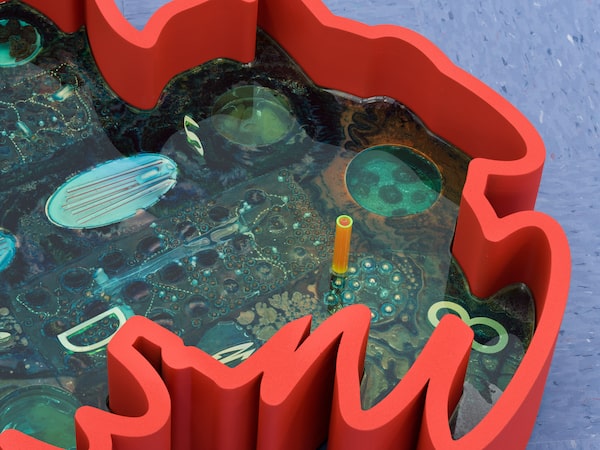
Toronto-based artist Catherine Telford Keogh's Nervous System is her first solo exhibition in New York.Sebastian Bach
The furniture resembles the waiting room of an upscale dental practice or a cosmetic surgeon’s office – or maybe it’s more a caricature of those. Designy-looking seats upholstered in clinic-white fabric float from a floor-to-ceiling tube structure with funny-shaped, tri-level shelving units hung beside. No, you have not taken the wrong door. This is the art gallery. It’s the smell – faint but familiar – that should tell you much more is happening here.
For her first solo exhibition in New York, Toronto-based artist Catherine Telford Keogh presents Nervous System at Helena Anrather through Feb. 23. The show, she says, explores the interaction between materials within various closed and open systems. If it sounds like a science experiment, that’s because, partly, it is.
Within the tables mounted beside the modified video-gaming chairs, Telford Keogh has inset cast containers, trays and hygienic products such as Dial soap. Some recesses are filled with a solution of BioPure and ExxonMobil gasoline – the former, a microbial cleaner that eats organic matter, like the fuel. Their scent escapes into the gallery through a series of ventilation holes. A series of three capsule-like floor sculptures contain a maceration of consumer products, both organic (pickles, olives, maraschino cherries) and other (polyurethane foam, headache pills, fragrance beads), which degrade and transform over time. The artist has a special knack for collapsing the distinction between the seductive and the grotesque; these sculptures, wrought in the candy colours of sex toys and dish detergents, manage both.

Telford Keogh says the show explores the interaction between materials within various closed and open systems.Sebastian Bach
Telford Keogh says she deploys materials that play surprisingly in context. Though her experimentation is mainly concerned with material interactions, the findings extend to systems greater and more complex – be they biological, ecological, social, technological, economic, political or climatic.
Some components of a system are vulnerable, while some are robust. Some are especially reactive, and some are inert. Some depend on each other; some repel. Some parts are influenced easily, while other parts of a system are stubborn or resistant or difficult to change.
Live your best. We have a daily Life & Arts newsletter, providing you with our latest stories on health, travel, food and culture. Sign up today.